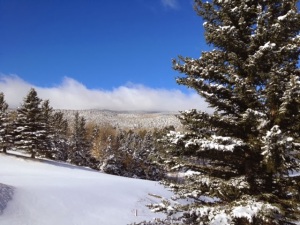A fun way to celebrate the holiday season for children of all ages is to create poetry. The poetry could be part of a Christmas card greeting, or a decoration to hang on the tree, or just a celebration of the winter season.
For young children, the poem can be a simple free verse phrase or two.
For older children, rhyme and rhythm can be incorporated.
For all, the choice of subjects abounds from wintery scenes, to well-known Christmas themes, or even end of year reminiscing.
A simple poem exploring a winter scene is Winter Treats, found on my website. Use this poem to encourage children to look outside and describe a scene they see. Can they bring the scene to life with their words?
An example of a Santa poem at Essential Learning Products is Hip! Hip! Hooray! by Beverly McLoughland. This poem could be used with children to jump start their poetry writing. It also could be used as a geography lesson, traveling the globe with Santa.
For a more spiritual poem, read Christmas Day, also found on my website. Have the child find a Christmas card picture or perhaps an ornament that he likes. Then have the child use this image to create a poem in rhyme, free verse, or haiku.
Poetry should be a fun and creative process. There are no rights or wrongs–only writes!




